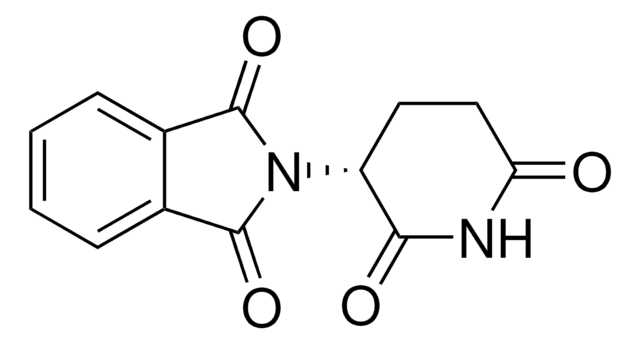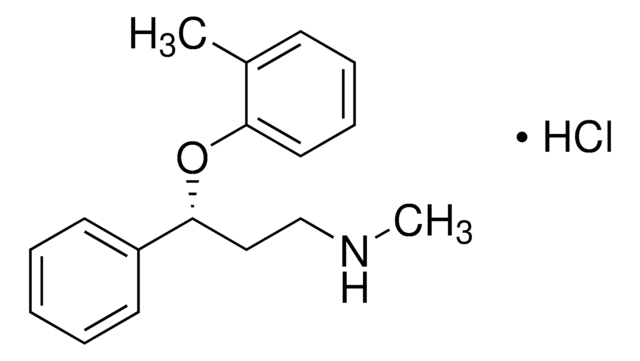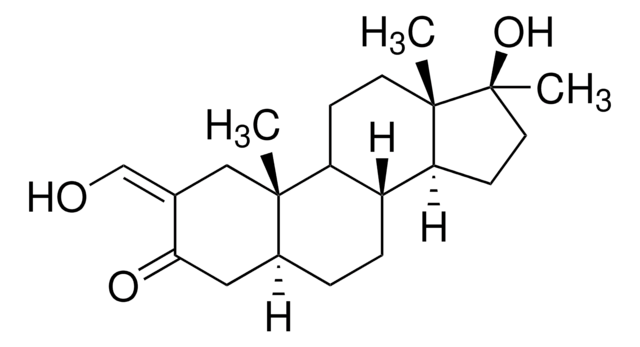T150
(−)-Thalidomide
>98%, solid
Synonym(s):
S(−)-2-(2,6-Dioxo-3-piperidinyl)-1H-isoindole-1,3(2H)-dione
About This Item
Recommended Products
ligand
thalidomide
Assay
>98%
form
solid
optical activity
[α]23/D −62.6°, c = 2 in DMF(lit.)
reaction suitability
reagent type: ligand
technique(s)
cell culture | embryo: suitable
color
white
solubility
DMSO: soluble
H2O: insoluble
ethanol: insoluble
originator
Celgene
SMILES string
O=C1CC[C@H](N2C(=O)c3ccccc3C2=O)C(=O)N1
InChI
1S/C13H10N2O4/c16-10-6-5-9(11(17)14-10)15-12(18)7-3-1-2-4-8(7)13(15)19/h1-4,9H,5-6H2,(H,14,16,17)/t9-/m0/s1
InChI key
UEJJHQNACJXSKW-VIFPVBQESA-N
Gene Information
human ... LITAF(9516) , TNF(7124)
mouse ... Nos2(18126)
rat ... Nos1(24598)
General description
Application
Biochem/physiol Actions
Features and Benefits
Preparation Note
Application
related product
Signal Word
Danger
Hazard Statements
Precautionary Statements
Hazard Classifications
Acute Tox. 4 Oral - Repr. 1B
Storage Class Code
6.1C - Combustible acute toxic Cat.3 / toxic compounds or compounds which causing chronic effects
WGK
WGK 3
Personal Protective Equipment
Certificates of Analysis (COA)
Search for Certificates of Analysis (COA) by entering the products Lot/Batch Number. Lot and Batch Numbers can be found on a product’s label following the words ‘Lot’ or ‘Batch’.
Already Own This Product?
Find documentation for the products that you have recently purchased in the Document Library.
Chromatograms
application for HPLCapplication for HPLCOur team of scientists has experience in all areas of research including Life Science, Material Science, Chemical Synthesis, Chromatography, Analytical and many others.
Contact Technical Service









